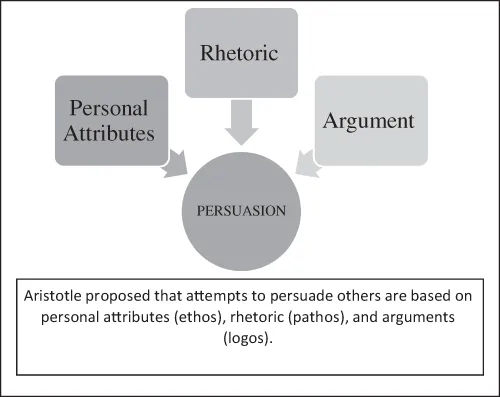
Grey Behaviors after Logical Fallacies in Public and Professional Communication
- 112 pages
- English
- ePUB (mobile friendly)
- Available on iOS & Android
Grey Behaviors after Logical Fallacies in Public and Professional Communication
About This Book
This practical guide enables readers to recognize, assess, and defend against gray behaviors—attempts to persuade listeners using fallacious arguments. It provides valuable tools for communicating successfully in a wide variety of public and professional contexts.
The book examines 20 wide-ranging logical fallacies, cognitive errors, and rhetorical devices that may take place in persuasive communication, and discusses how to assess and respond the behavior of a speaker who may be disingenuously attempting to manipulate the listener—or who may simply be mistaken. Drawing upon research and insights from communication, psychology, business management, and human resources, it considers fallacies in reasoning not just as abstract formulas, but as a feature of communication encounters such as negotiations, interviews, public debates, and personal conversations. Each form of fallacious reasoning is exemplified by dialogues in both professional settings (such as interviewing and personnel assessment), as well as everyday interactions in public discourse. The book then provides self-assessment tests to ensure the reader can evaluate the grey behavior in these encounters.
This book provides research-based skills and insights that will benefit students and professionals in fields ranging from communication, politics, management, human resources, organizational psychology, journalism, and anyone else looking to develop critical interaction skills.
Frequently asked questions
1 Introduction
- We describe the purposes of the book.
- We give background on the role of logic in persuasion.
- We help you identify types of logical fallacies.
- We show the advantages of having preventive knowledge regarding fallacious thinking.
- We show the advantages of behavioral analyses of fallacious thinking.
- We show you how to assess the level of severity of grey behaviors after a person states a logical fallacy.
- Communication and discussion are complex processes.
- Some logical fallacies are difficult to understand.
- Any short book cannot de-bias faulty thinkers.

Introduction
- recognize 20 fallacies commonly used in spoken and written communication,
- reserve judgment about the seriousness of fallacious thinking by the speaker,
- enter into a dialogue to help the speaker correct fallacies, and
- make a behavioral assessment of the speaker’s level of fallacious thinking.
Grey Behavior
Theoretical and Historical Background

Argument
Reasoning occurs whenever the mind draws conclusions on the basis of reasons. We draw conclusions whenever we make sense of things. Usually we are not aware of the full scope of reasoning in our lives. We begin to reason from the moment we wake up in the morning. We reason when we figure out what to eat for breakfast, what to wear, whether to stop at the store on the way to school, whether to go with this or that friend to lunch. We reason as we interpret the oncoming flow of traffic, when we react to the decisions of other drivers, when we speed up or slow down. We reason when we figure out solutions to problems. We reason when we formulate problems. We reason when we argue.
What Is Logical Fallacy (Bad Argument)?
- Step 1: Make sure the conclusion follows from the premise(s).
- Step 2: Make sure all of the premises in the argument are true.
Table of contents
- Cover
- Half Title
- Title Page
- Copyright Page
- Dedication
- Table of Contents
- List of Illustrations
- Preface
- 1 Introduction
- 2 Grey Behaviors after Relevance Fallacies 1–9
- 3 Grey Behaviors after Induction Fallacies 10–17
- 4 Grey Behaviors after Formal Fallacies and Fallacies of Language 18–20
- 5 Other Examples of Potentially Misleading Tactics That May Be Followed by Grey Behavior
- 6 Conclusions and Applications
- References
- Appendix I: Answers to Quizzes in Self-Assessments
- Index